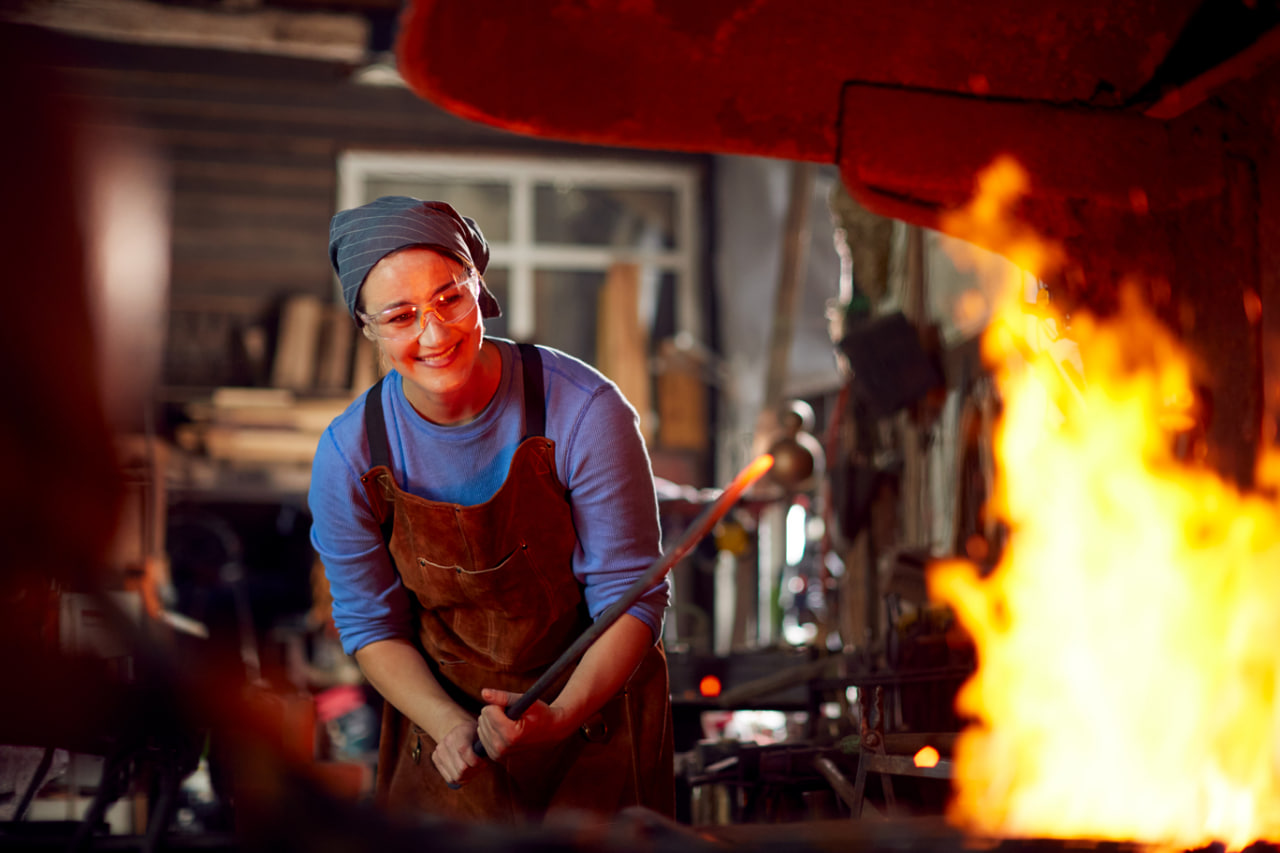The Best Fluffy Pancakes recipe you will fall in love with. Full of tips and tricks to help you make the best pancakes.

Blacksmithing is a craft that blends skill, precision, and creativity. To start forging successfully, having the right tools is essential. The tools you choose not only make your work easier but also influence the quality, safety, and efficiency of your projects. Understanding the function and proper use of each basic tool will give beginners a solid foundation and prepare them for more advanced techniques over time.
The Anvil
The anvil is the central tool in blacksmithing. It provides a stable surface for shaping, flattening, and forming metal. Beginners should look for an anvil with a smooth face and solid construction, ideally made from steel.
The horn of the anvil allows for bending and curving metal, while the flat face is perfect for hammering out shapes. Properly positioning the anvil and securing it to a heavy stand reduces vibration and ensures safe operation. A good anvil can last a lifetime and is the cornerstone of any metalworking setup.
Hammers
Hammers are the primary tools used to shape metal. For beginners, starting with a standard cross-peen hammer and a ball-peen hammer is recommended.
The cross-peen hammer is excellent for drawing out metal and creating lines or textures. The ball-peen hammer is ideal for rounding edges and peening rivets. Learning to choose the right hammer weight and face for each task is crucial. A well-balanced hammer improves precision and reduces fatigue during extended sessions.
Tongs
Tongs are essential for holding hot metal safely. Different shapes and sizes of tongs allow the blacksmith to grip various workpieces securely.
Some common types for beginners include flat-jaw tongs for flat stock, V-jaw tongs for round rods, and bolt tongs for larger pieces. Proper grip and tong positioning help maintain control while working near a forge, improving both efficiency and safety.
Forge
The forge is where metal is heated to a malleable state. Beginners can start with a coal or propane forge, each offering distinct advantages. Coal forges provide high heat and traditional experience, while propane forges are easier to control and cleaner to operate.
Maintaining the forge at the correct temperature is critical. Too low and the metal will be difficult to shape; too high and it may burn or crack. Learning to manage the heat is as important as mastering the tools themselves.
Chisels and Punches
Chisels and punches are used for cutting, shaping, and detailing metal. A cold chisel is ideal for slicing through stock, while a hot chisel is better for work on heated metal.
Punches are used to create holes or marks in metal pieces. Proper alignment, control, and striking technique ensure clean cuts and reduce the risk of injury. Investing in quality chisels and punches enhances both precision and durability.
Files and Rasps
Files and rasps are used for finishing, smoothing, and refining the metal after shaping. They allow for careful adjustments and the removal of sharp edges or burrs.
Flat files, half-round files, and round files each serve unique purposes. Using the correct file prevents uneven surfaces and maintains the integrity of the workpiece. Regular maintenance of files, including cleaning and storage, prolongs their effectiveness.
Safety Gear
While not always considered a “tool,” safety gear is indispensable. Beginners should equip themselves with gloves, an apron, safety glasses, and hearing protection.
Proper safety gear protects against burns, sparks, flying debris, and loud noise, allowing blacksmiths to focus on technique without unnecessary risk. Developing safe habits from the start is crucial for long-term success.
Measuring and Marking Tools
Precision in blacksmithing is achieved with measuring and marking tools. Calipers, rulers, squares, and dividers help ensure accurate dimensions and consistency.
Marking tools such as soapstone or metal scribes allow you to trace patterns and guidelines directly onto the workpiece. Accurate measurement reduces mistakes and improves the final quality of projects.
Workbench and Vise
A sturdy workbench and a reliable vise support a wide range of tasks. The vise holds metal securely while cutting, filing, or bending. A solid bench provides stability for hammering, forming, and assembly.
For beginners, investing in a bench that can withstand repeated blows and heat exposure ensures a safer and more productive workspace.
Maintenance Tools
Maintaining tools is as important as using them. Wire brushes, oil, and sharpening stones help keep hammers, chisels, and tongs in optimal condition.
Regular inspection prevents damage, extends the lifespan of tools, and ensures safe operation. A blacksmith who understands tool maintenance gains efficiency, precision, and confidence.
Building a Basic Tool Kit
For beginners, a compact yet functional set of essential tools is ideal. A beginner’s kit should include: an anvil, hammer(s), tongs, a basic forge, chisels, files, and safety gear.
Starting with this foundation allows learners to experiment, develop skills, and expand their collection over time. The right tools make the learning process more rewarding and enjoyable, setting the stage for advanced blacksmithing techniques.
